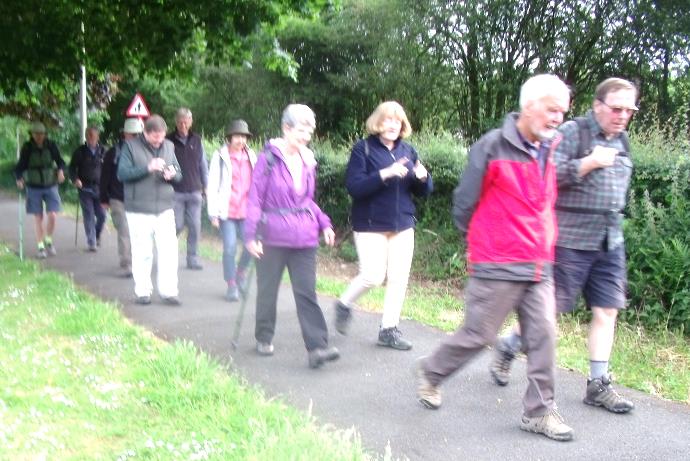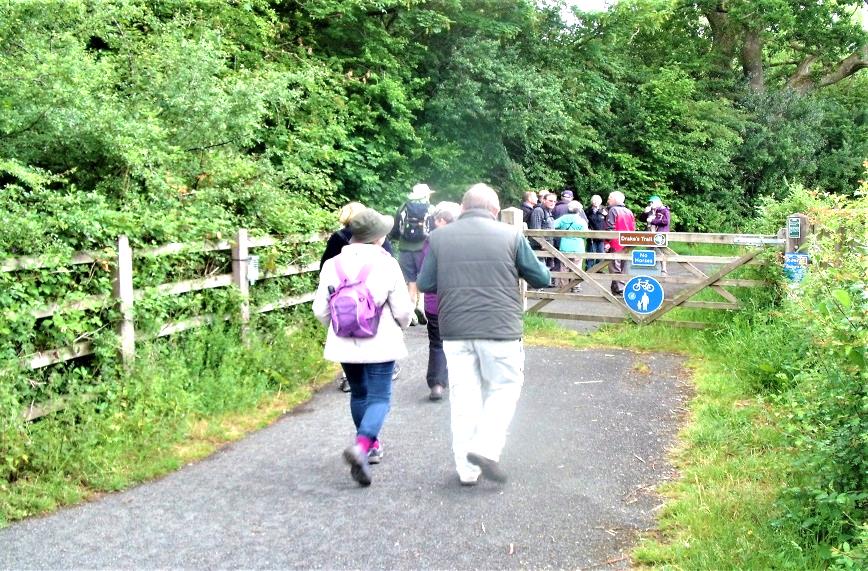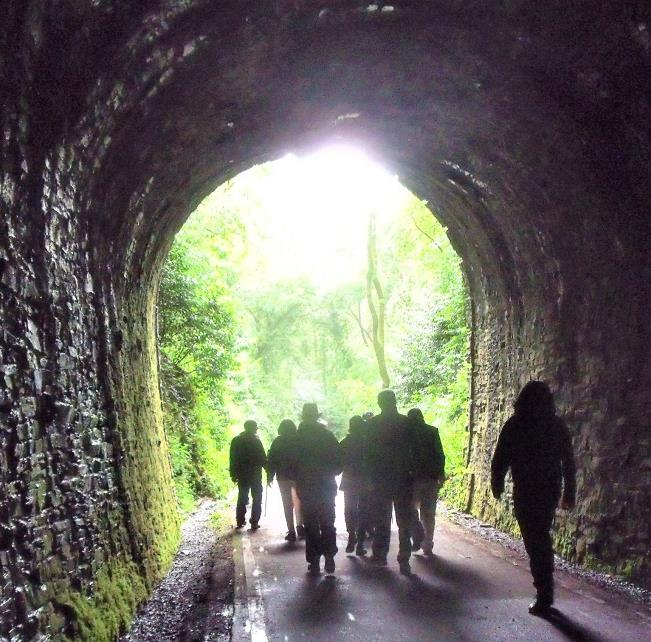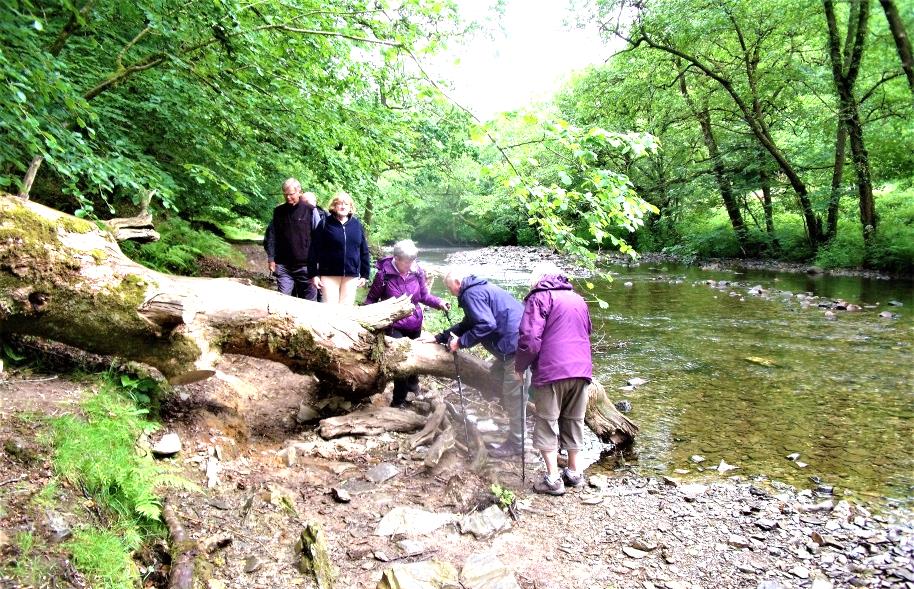During the next two weeks we will be walking along different sections of Drake’s Trail which you are sure to know was named after the famous Elizabethan sea-farer, Sir Francis Drake; this 21 mile cycling and walking route links Tavistock with Plymouth whilst skirting around the western edge of Dartmoor, but this route is just a small part of a National Cycle Network which often follows the route of a disused railway line. In the 19th century countless lines of railway were built in England complete with tunnels, bridges, viaducts and stations, construction on this scale had no precedent; the earthwork quantities and the size of the workforce were astonishing. Just a decade after the Beeching axe fell, a group of cyclists and environmentalists from Bristol formed the charity Sustrans to create the very first cycle and walking trail along one such railway line from the city of Bristol all the way to the city of Bath. By June 2000, 5,000 miles of trails had been completed and just five years later in 2005 the network had reached 10,000 miles, a real success story.

As spring edged towards summer this walk of two contrasts began with a bus ride into Tavistock; the first half was easy going on fairly flat paths while the second half took place in a more challenging, riverside setting. So after alighting near Drake’s statue we made our way down Crowndale Road and onto Drake’s Trail where we were soon following the blue signs dotted about along its length, they could be anywhere from gateposts and fences to lamp-posts. Once across the bridge that spans the River Tavy and then through a business park, the sound of traffic filled our ears, it’s not often that we walk in such urban areas and I longed to leave the noise behind and head into the countryside.

With the Tiddy Brook beside us the path continued along between houses and across one or two roads where we then entered the off-road section through a wooden gate. Here the sound of traffic was barely audible and we could relax a bit whilst at the same time keeping our eyes peeled for cyclists that use the trail as well as pedestrians. The tarmacked path was edged on both sides with colourful wildflowers such as Campions, Buttercups, Herb Robert and Speedwells and as the days grow longer and temperatures rise, more insects can be seen and heard as they flit about. Trees were swaying in the breeze and I spotted quite a number of Elders sporting clumps of flowers which are often picked in the month of June to make Elderflower wine or a wonderfully refreshing non-alcoholic Elderflower cordial. It is often said that summer starts when elder trees burst into flower and ends in late August when the berries are ripe.

Off in the distance we could see a steep hill but as we got closer the trail led off to the right and into a long, dark tunnel while the hill itself just led up to Drake’s Café on the A386. Grenofen Tunnel as it is known is dead straight so we could see light at the far end making it appear closer than it actually was but it was not the first time we have walked from one end to the other so most of us had come prepared. Some had torches or mobile phones to light the darkest stretches or hooded clothing or hats and even, in a few cases, umbrellas for the places where the water seeped through from above as we ran the gauntlet, a word which incidentally in this context, has nothing to do with heavy, protective gloves. A few drips or any other trying situation for that matter which does not usually cause serious injury is preferable to the original meaning of this saying. The Swedish military word gatlopp came into use during the thirty years’ war between 1618-1648 at which time a wrong-doer was made to run between two rows of soldiers who would whip or beat them as a punishment. In England, the unfamiliar Swedish word ’gatlopp’ was quickly replaced by the more familiar English word ‘gauntlet.

From here everyone followed Maggie along the track through the trees and down to Grenofen Bridge just as a short shower arrived; it was impossible to sit anywhere so we didn’t stay long and from there back to the car park we followed the damp path beside the River Walkham. There were many obstacles to overcome from exposed tree roots to fallen trees and everyone helped each other across. Some trees lay where they had fallen long ago and where the sun hit them, small seedlings had sprouted. The river level was very low this morning where the shingle seemed to heap up in the centre and what water there was just channelled past on either side.

Shortly after walking beneath Gem Bridge we heard a commotion and stood to watch as two male Mallards fought for the attention of a female with wings flapping and splashing water about. When she flew off in the direction we were going, first one then the other of her suitors followed in hot pursuit. Jokes were made about ‘flighty birds’, ‘ruffling her feathers’ ‘love triangles’, and ‘the winner taking all’ with each one of us laughingly attempting to outdo each other as we neared the car park.
[foogallery id=”4593″]